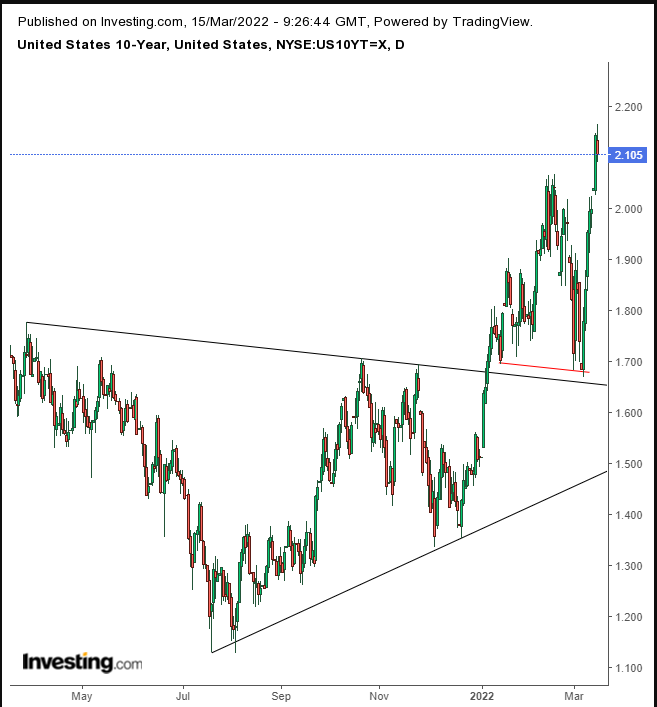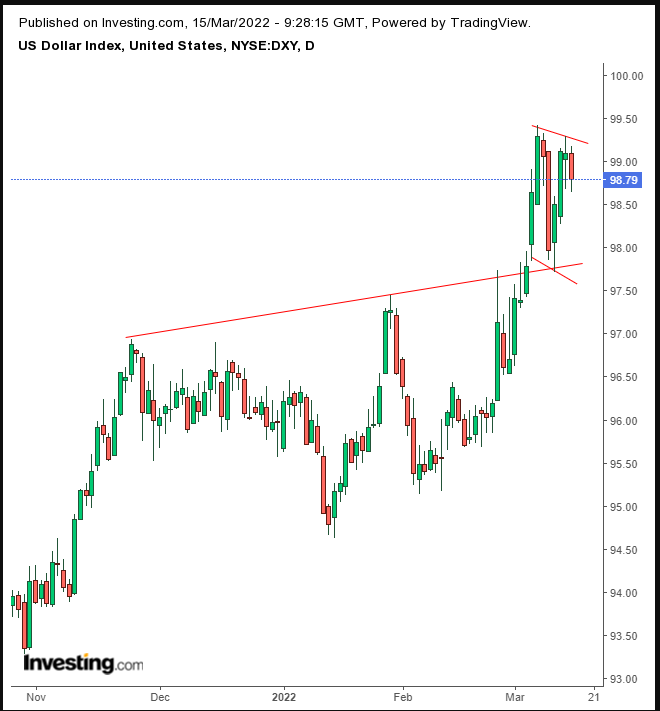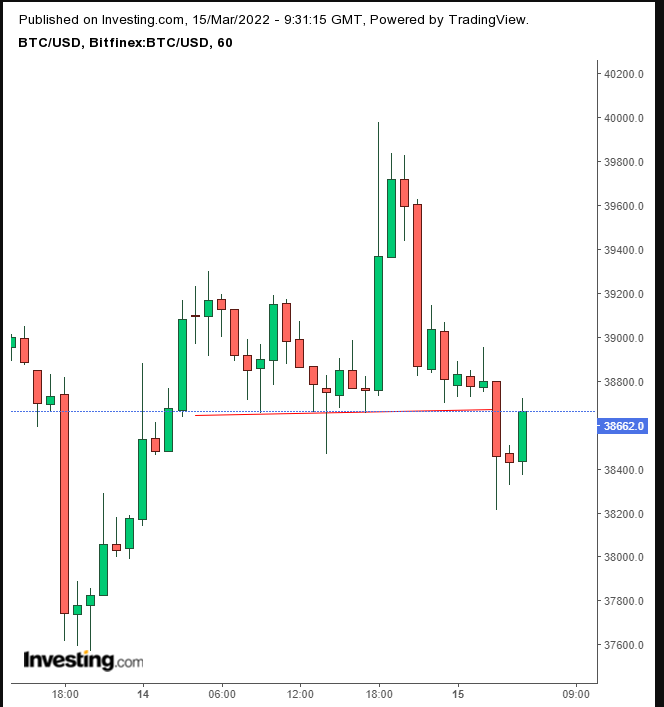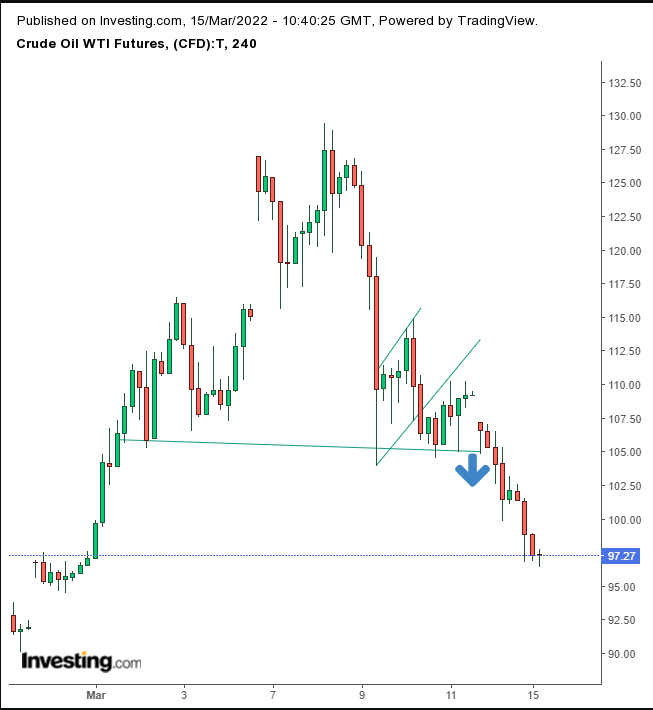- Diplomatic efforts to end of war in Ukraine fail
- Yields rally ahead of Wednesday's Fed decision
- COVID surge in China causes worldwide concern
Key Events
US futures on the Dow Jones, S&P 500, NASDAQ, and Russell 2000 fluctuated on Tuesday while European and Asian stocks slipped. Stocks in China plummeted as local COVID cases soared. As well, China's strong ties with Russia—which continued to bomb Ukraine after yesterday's peace negotiations failed—have started to become a liability for the Asian nation. Markets are worried that the US may sanction China if it provides military support to Russia.
Investors are also considering the effects of tightening US monetary policy ahead of tomorrow's interest rate decision from the US Federal Reserve.
Global Financial Affairs
All four major US index contracts spiked simultaneously at 4:00 EST when European trading opened but then slid lower. Last week, the Russell 2000 outperformed and the NASDAQ 100 lagged. That relationship has flipped in today's trading and the Russell is leading the charge lower ahead of the US open.
In Europe, the STOXX 600 Index has fallen around 1% as commodity-related stocks were buffeted by a surge in coronavirus infections in China that has led to increased restrictions there. The pan-European index was also dented by miners and travel and leisure shares coming under pressure.
Despite reporting quarterly sales in line with expectations, the world's second-largest fashion retailer, shares in Sweden's H&M (ST:HMb) slid.
Asian markets were mostly red earlier today. Hong Kong's Hang Seng was the hardest hit, posting a 5.72% loss amid a tech rout. J.P. Morgan called China's internet sector "uninvestable," downgrading 18 companies to underweight amid macro and geopolitical risks, provoking global funds to divest.
The Hang Seng's plunge brought the index to a fresh six-year low, with a loss of $460 billion of market value. China's internet giant, Alibaba (HK:9988) crumbled, down almost 12%.
The Treasury rout enjoyed a breather, allowing yields on the 10-year note to reach 2.1%.

It's now official—the sizeable symmetrical triangle decimated the smaller H&S top, suggesting a continued bond selloff.
The dollar slipped for a second day.

The greenback resumed its move along with the potential falling flag we discussed yesterday after breaking out of an H&S continuation pattern.
Gold fell for the third straight day for the first time since Jan. 28, as we predicted.

The slide was due to profit-taking, after having reached the sizeable symmetrical triangle's implied target.
Bitcoin moved into negative territory, halving yesterday's progress.

The cryptocurrency just confirmed the resistance of the neckline of an H&S top on the hourly chart.
Oil extended its selloff below $100, losing 20% after hitting a 14-year high.

The price completed the H&S top we outlined last week.
Up Ahead
- Canada reports CPI figures on Wednesday.
- On Wednesday, the EIA crude oil inventory report is published.
- The Bank of England rate decision is announced on Thursday.
Market Moves
Stocks
- The STOXX 600 fell 2%
- Futures on the S&P 500 fell 0.7%
- Futures on the NASDAQ 100 fell 0.6%
- Futures on the Dow Jones Industrial Average fell 0.7%
- The MSCI Asia Pacific Index fell 1.8%
- The MSCI Emerging Markets Index fell 2.9%
Currencies
- The Dollar Index fell 0.1%
- The euro rose 0.5% to $1.0999
- The Japanese yen fell 0.1% to 118.07 per dollar
- The offshore yuan was little changed at 6.3995 per dollar
- The British pound rose 0.2% to $1.3026
Bonds
- The yield on 10-year Treasuries declined four basis points to 2.09%
- Germany's 10-year yield fell to 0.35%
- Britain's 10-year yield fell to 1.59%
Commodities
- WTI crude dropped 5.15% to $97.72 a barrel
- Brent crude fell 5.4% to $101.17 a barrel
- Spot gold fell 0.9% to $1,933.79 an ounce
